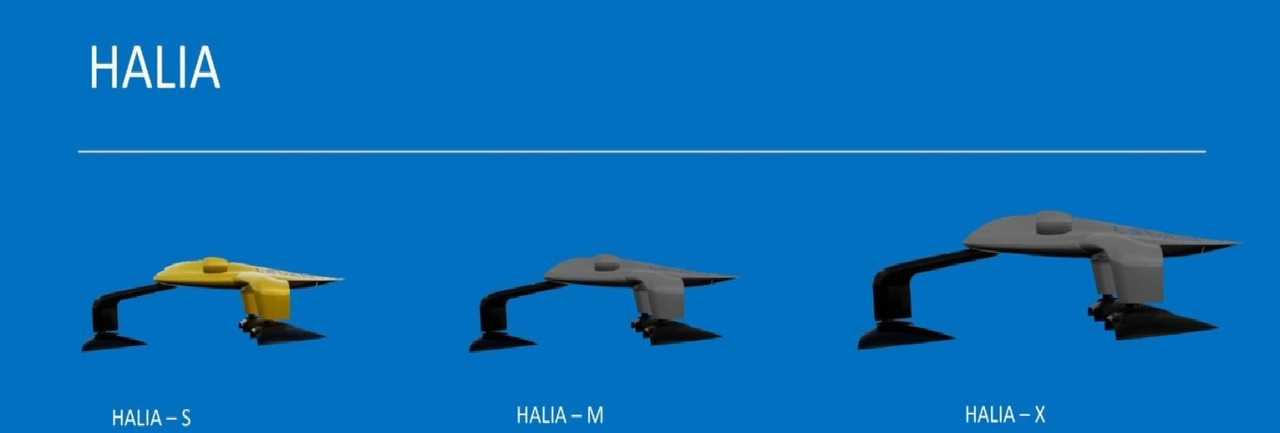Ukraine and US Team up to Build a “float-and-fly” HALIA Hybrid Drone for Maritime ISR and Strike Missions

Ukraine’s state defense concern Ukroboronprom and U.S.-based LeVanta Tech have announced a new collaboration to develop HALIA, a family of hybrid “float-and-fly” drones capable of operating both on the water’s surface and in the air. These innovative drones are being designed for maritime intelligence, surveillance, and reconnaissance (ISR) missions — and potentially for strike operations as well.
The partnership aims to jointly develop and test HALIA prototypes in Ukraine, with plans for local production if the trials prove successful. The initiative represents a blend of American technology and Ukrainian battlefield experience, targeting a new niche in modern unmanned warfare — long-range, sea-air hybrid drones.
A hybrid design concept
The HALIA drone series introduces a dual-mode capability — the ability to float quietly on the sea surface for extended surveillance and then take off rapidly into flight when required. This unique design allows it to conserve energy, remain less detectable, and quickly reposition for missions across large maritime zones. According to LeVanta Tech, HALIA bridges the gap between traditional airborne ISR drones and naval surface drones, providing persistent coverage and fast mobility when needed.
Planned variants and specifications
Three variants of the HALIA drone are currently in development, each offering different ranges, payload capacities, and speeds to suit various mission profiles:
-
HALIA-S (civilian variant): 400 km range, 45 kg payload, cruise speed 120–160 km/h, max dash 200 km/h (approx.)
-
HALIA-M (military variant): 1,000–3,000 km range, cruise speed 180–220 km/h, max dash 300 km/h (approx.)
-
HALIA-X (strategic variant): 4,800 km range, 1,000 kg payload, cruise speed 250–320 km/h, max dash 400 km/h (approx.)
These figures are preliminary and may vary once flight testing begins. If confirmed, they would make the HALIA family among the most versatile long-range hybrid drones in the world.Designed for ISR — capable of strike
While the HALIA series is officially described as an ISR and maritime monitoring platform, defense analysts note that its long range, high payload capacity, and autonomous navigation could easily be adapted for strike missions, including kamikaze-style attacks. In this role, HALIA could act as a loitering munition, capable of floating for hours or days and then taking off to strike maritime or land-based targets.
Such versatility could offer Ukraine a new form of persistent sea-based deterrence, complementing its existing fleet of surface drones and loitering munitions already used in the Black Sea conflict.
Prototype testing and local production
Ukroboronprom and LeVanta Tech confirmed that prototype development and testing will be conducted in Ukraine, leveraging the country’s experience in combat drone deployment. If successful, the companies plan to establish local production lines in Ukraine, enabling large-scale manufacturing and export potential in the future.
The collaboration also aims to strengthen Ukraine’s defense industrial base, providing engineers and technicians access to new technologies in hybrid propulsion, materials, and maritime flight systems.
Unmanned maritime warfare
The HALIA project reflects a growing global trend toward multi-domain unmanned systems — platforms that can operate across air, sea, and land environments. If the HALIA prototypes achieve their expected performance, they could become a game-changing asset for maritime surveillance and long-range strikes, offering Ukraine and its partners a new tool for coastal defense and intelligence gathering.
For now, HALIA remains a promising concept, but if it meets its targets, it could redefine how nations conduct maritime ISR and hybrid drone warfare in the coming years.
✍️ This article is written by the team of The Defense News.







